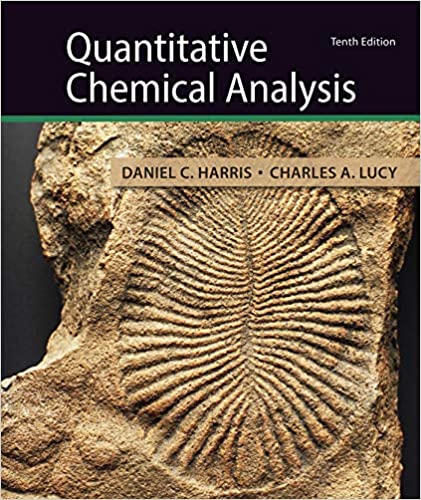Permanganometric titration of iron (II)
general remarks
Oxidation of Fe2+ by permanganate is one of the most popular titrations. However, while it looks very simple and straightforward, in fact to be accurate we have to take into account several factors.
The most obvious one concerns all permanganate titrations - when permanganate is used as a titrant we should use different technique to read volume of liquid in the burette. The meniscus is not visible, as the solution is opaque - thus we have to look at the top of the liquid.
As Fe2+ gets easily oxidized by air oxygen, before titration we should ensure that all iron is in the form of Fe2+. It is possible to reduce iron3+ using Jones reductor (column filled with granules of amalgamated zinc), however, most commonly reduction is done with tin (II) chloride:
2FeCl3 + SnCl2 → 2FeCl2 + SnCl4
To be sure reaction was complete small excess of the SnCl2 is added, and then solution is treated with mercury (II) chloride:
SnCl2 + 2HgCl2 → SnCl4 + Hg2Cl2(s)
White precipitate of mercury (I) chloride is not easily oxidized by permanganate. However, this procedure works only if the excess of SnCl2 is small - otherwise mercury cations can be reduced to metallic mercury, which can reduce permanganate. In the presence of metallic mercury precipitate becomes gray, so it is not difficult to recognize samples in which reduction was not successful.
If the solution was prepared by dissolving iron sample in concentrated hydrochloric acid (which is a standard procedure during iron alloy analysis) it contains high concentration of chlorides. Their presence is detrimental to the analysis results in two ways.
First, iron (III) chloride complexes are yellow, and they can make it difficult to spot end point. To avoid the problem we can add phosphoric acid to the solution. Phosphate complex has higher stability constant and is colorless.
Second, permanganate is strong enough to oxidize chlorides to free chlorine. While this process is slow, it can make it difficult to obtain consistent results of the titration. To avoid the problem we can add Mn2+ to the solution to lower redox potential of the permanganate to the point where chloride oxidation is impossible.
To simplify titration procedure we can use so called Reinhardt-Zimmermann solution, which combines concentrated sulfuric acid, MnSO4 cations and phosphoric acid, so that they don't have to be added separately.
reaction
Reaction taking place during titration is
5Fe2+ + MnO4- + 8H+ → 5Fe3+ + Mn2+ + 4H2O
sample size
For 0.02 M titrant and assuming 50 mL burette, aliquot taken for titration should contain about 0.2-0.25 g of iron (3.5-4.5 millimoles).
end point detection
As usual in the case of permanganate titrations, pink color of excess permanganate is strong enough so that there is no need for any other end point indicators.
solutions used
To perform titration we will need titrant - 0.02 M potassium permanganate solution, Reinhardt-Zimmermann solution, about 0.7M tin (II) chloride in hydrochloric acid solution, 5% mercury (II) chloride solution and some amount of distilled water.
procedure
- Bring iron solution (acidified with hydrochloric acid to pH around 0.5) almost to boil.
- Add drop wise SnCl2 solution to agitated iron solution till the yellow color disappears and then one drop of excess.
- Cool the solution.
- Add fast 10 mL of mercury (II) chloride solution.
- If the precipitate is gray, don't titrate sample.
- In the separate flask mix 400 mL water with 25 mL of Reinhardt-Zimmermann solution. Don't forget to add mixture to water!
- Add reduced sample to the flask.
- Titrate with permanganate solution until a faint pink color persists for 30 seconds.
result calculation
According to the reaction equation given above 1 mole of permanganate reacts with 5 moles of iron and this ratio have to be used for titration result calculation.
To calculate iron solution concentration use EBAS - stoichiometry calculator. Download determination of iron concentration reaction file, open it with the free trial version of the stoichiometry calculator.
Click button above MnO4- in the input frame, enter volume and concentration of the titrant used. Click button. Read number of moles and mass of iron in the titrated sample in the output frame. Click button in the output frame below iron, enter volume of the pipetted sample, read iron concentration.
sources of errors
Apart from general sources of titration errors, when titrating iron with permanganate we should pay special attention to titrant and to reduction procedure. Potassium permanganate solutions are not stable and they should be filtered and normalized every 2-3 months. If the precipitate after reduction procedure is gray, we should omit the sample. As the end point is detected after excess titrant is added, it is worthwhile to perform a blind test and subtract blind test volume from the titration results.
If it happens that we are told to follow procedure given in lab manual, and it doesn't call for iron reduction prior to titration, we can blame air oxygen for inconsistent results ;)





